Packing and transporting works of art is a real challenge for anyone wishing to ship them. The process for doing so differs significantly from traditional e-commerce processes, as the goods can be expensive, bulky, valuable and/or fragile.
So how do you go about it?
Here’s a handy four-step guide to successful art shipping, from packaging to final delivery.
Step 1: Choose the right packaging for your artwork shipments
Works of art are fragile and often expensive – or at least precious. All the more reason to choose the right packaging for shipping them, and to follow good practice when it comes to the logistical preparation of this type of product.
Shipping a framed painting
To ship a painting that has already been framed, you should start by packing the work itself in suitable cushioning material.
This must be both :
- Scratch-resistant
- Shockproof
- Electrostatic
Turn to shimming methods such as :
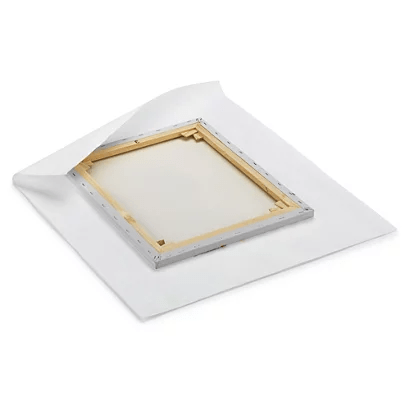 |
Tyvektyvek film is specifically designed not to scratch fragile surfaces thanks to its neutral pH and its rot-proof, antibacterial and tear-proof material. |
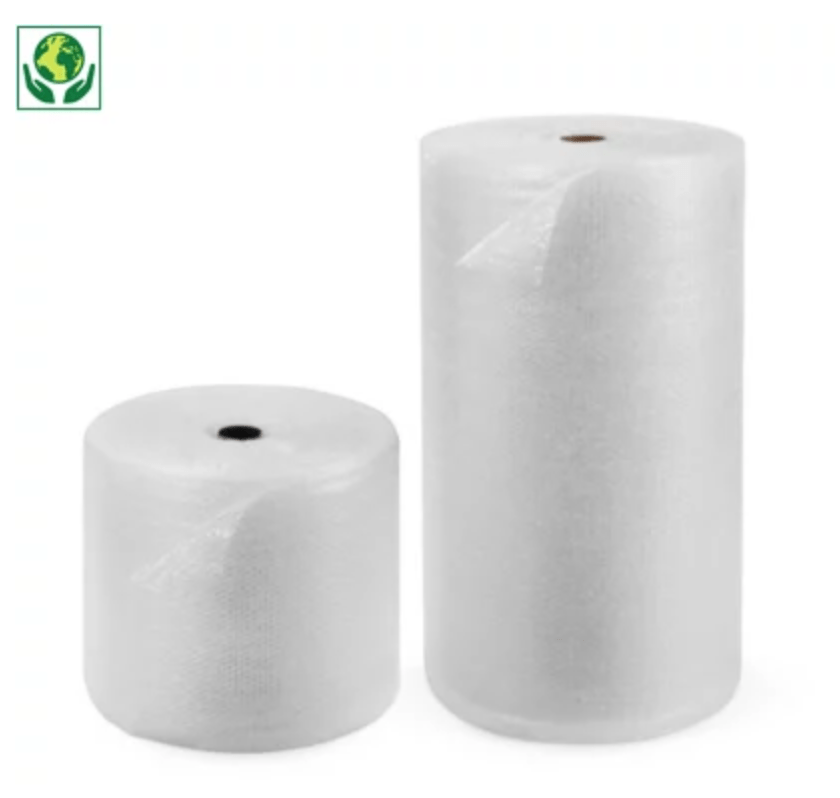 |
Bubble filma classic and effective cushioning material – or its eco-responsible version, fully recyclable bubble wrap. |
 |
Tissue paperSilk paper, soft and attractive, ideal for protecting the most delicate surfaces. |
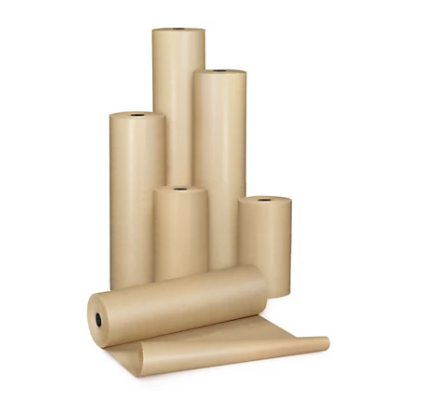 |
Kraft paperKraft paper is eco-responsible, protecting both your goods and the planet. |
 |
Polyethylene foam sheetswhich can be cut to the size of your work of art. |
Once your work of art is well wrapped, slip it into packaging designed for framed pictures.
You can choose from the following packaging options:
 |
The cardboard box with integrated foam which provides extra shock and scratch protection for your fragile products. |
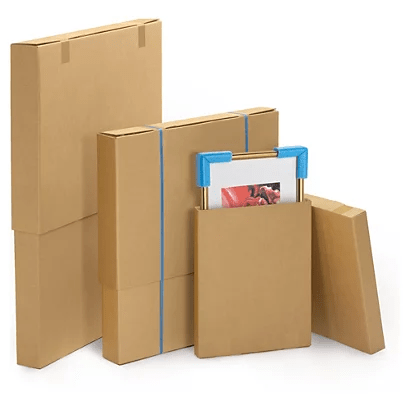 |
The flat telescopic brown boxWith its double-fluted cardboard, it can be adjusted in height and provides protection. |
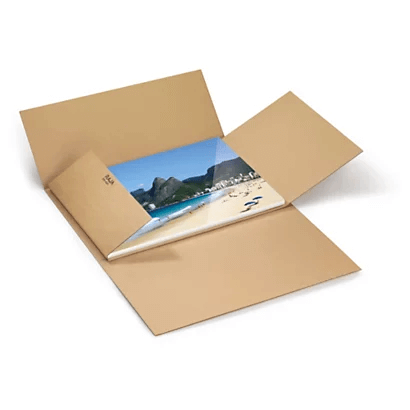 |
The postal cross case provides optimum protection thanks to its cardboard edges and height-adjustability. |
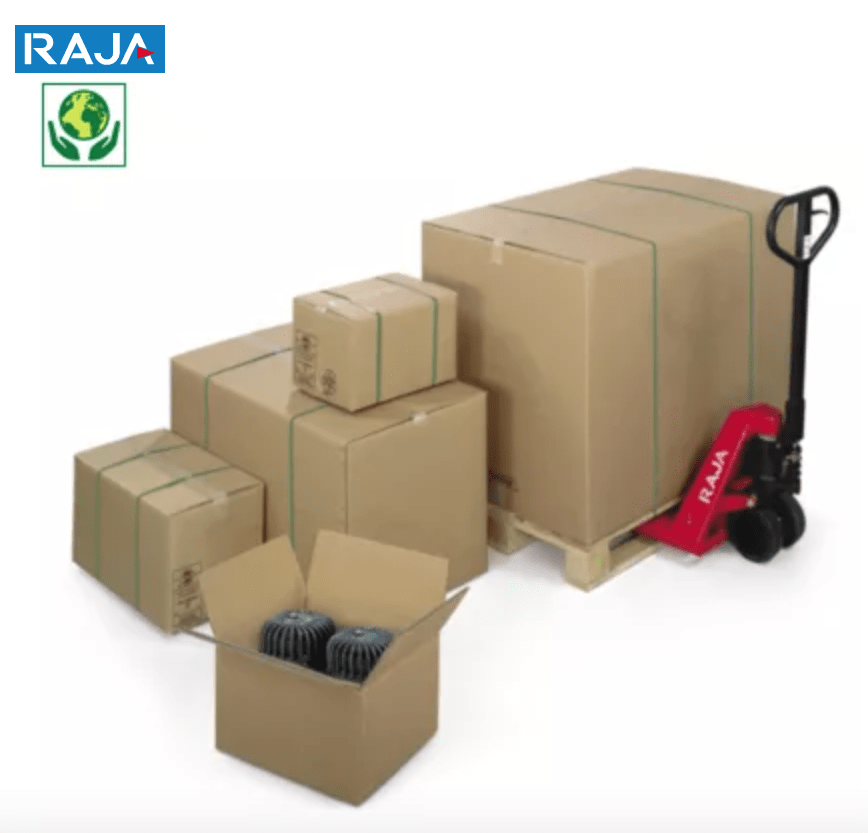 |
The triple-flute cardboard boxideal for packing a very large painting. This should be combined with a wedging method to limit the movement of the work in the box. |
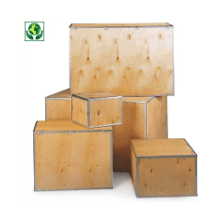 |
Wooden cratesThe wooden crate is ideal for very fragile or expensive works of art, or for international shipping. It offers maximum protection, and must also be combined with a wedging method built into the crate itself. |
To send a painting or photograph unframed
Can your work of art be rolled up?
Start by wrapping it in tissue paper, which provides optimum protection and softness for direct contact with the artwork. Then wrap it a second time in kraft paper, bubble wrap or foam, for optimum protection.
Finally, complete your package by slipping it into packaging designed for rolled artworks, such as :
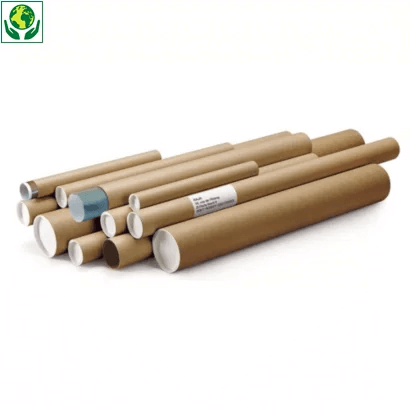 |
The shipping tube, available in round, square or triangular format, depending on the size of your painting or photograph. |
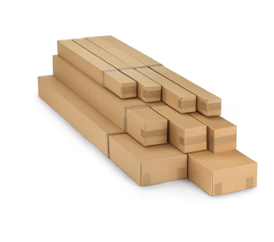 |
The telescopic single-flute long cardboard boxadaptable in length and highly protective. |
To ship a work flat
To ship works of art flat, start by positioning the work on a piece of rigid cardboard, which will enable it to retain its flat shape throughout the logistics chain.
Then wrap your work in an electrostatic plastic bag, before slipping everything into packaging designed for flat artwork, such as a padded pouch.
Shipping a sculpture
Each art sculpture has different characteristics, so you’ll need to choose a suitable cushioning product to prevent scratches, damage and knocks during transport. Bubble wrap is generally recommended.
Once your sculpture is securely wrapped in its cushioning material, choose a wooden crate that is the right size for the work. We recommend that you choose a crate that extends 5 to 10 centimetres beyond each side of the work, and that you wedge the work into the crate as tightly as possible.
Whatever the type of artwork you are sending, don’t hesitate to use made-to-measure packaging if your work of art is expensive.
Step 2: Reinforce the protection of your work of art
Before shipping your work of art, you should make sure that you have applied all the necessary protective elements to the packaging.
In particular, remember to :
- Add cardboard corners and angles to framed paintings, so that the edges are well protected from knocks.
- Wrap the parcel in plastic stretch film, to make it resistant to humidity and weather conditions during transport. You can also choose black plastic film to keep the contents of the parcel confidential.
- Affix signs to the packaging to encourage carriers of works of art to be vigilant during transit. In particular, think about usingstickers orlabels that indicate the fragility of the work. You can also add a sticker with “quality control” written on it.
Step 3: Find the transport provider best suited to your needs
This step is crucial to ensuring a smooth art shipment.
If your works are of little value
In the case of inexpensive works of art, you can choose to ship them using La Poste or Chronopost.
However, your parcel must meet the following conditions before La Poste will accept to send it:
- Its length, width and thickness must not exceed 100 cm when added together
- Its maximum length must be 60 cm
- Its maximum thickness must be 3 cm
- It must not weigh more than 3 kg
The advantage of this type of shipment? You can request an express transport service.
If your works are more expensive or fragile
In this second case, it is advisable to use a carrier specialising in shipping works of art.
Choose a transport company that is specifically trained in handling, loading and unloading works of art (which is always done on a “curbside-to-curbside” basis, i.e. from the sender’s hands to the recipient’s hands). The delivery person must also be equipped with vehicles suitable for shipping works of art.
For example, you can turn to :
- Crown Fine Art
- LP Art
- Evertrans
- Artrans
- Convelio
- In’Art Transport
International deliveries can be made by sea, air, rail or river. However, road transport remains the most secure for this type of goods. For international shipments, your goods transport provider must also take care of customs clearance procedures.
Step 4: Choosing the right insurance for your artwork shipment
Last but not least, you should check in your transport contracts to what extent your works of art are insured during shipment.
If the maximum value covered is less than the value of your work of art, you should consider adding extra insurance to your shipment. The solution is to take out ad valorem insurance, which provides compensation calculated on the basis of the value of the works shipped. These indemnities are generally different depending on whether the problem is breakage, loss or theft.
Congratulations: you’re now equipped with the best equipment and the most suitable logistics carriers to protect your works of art during shipment!
















